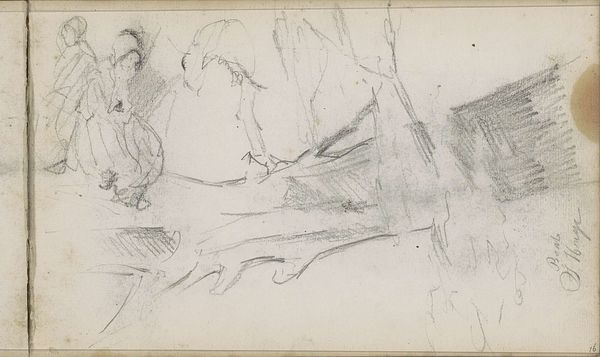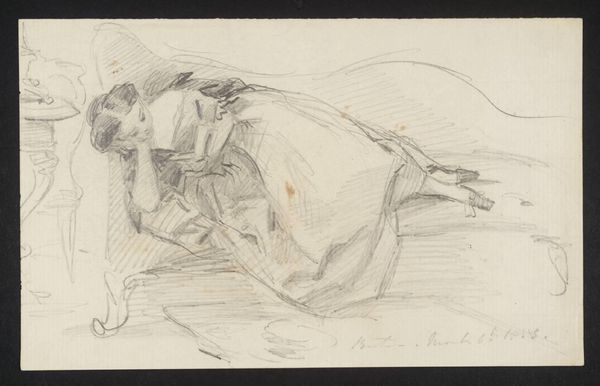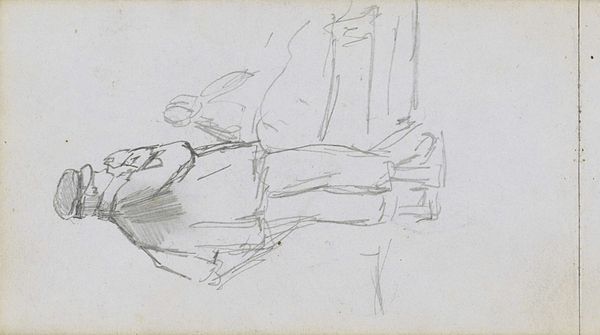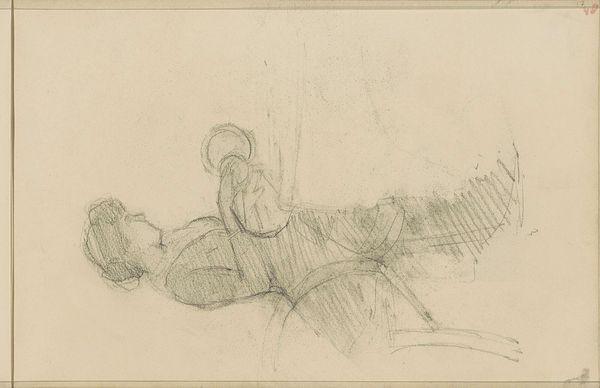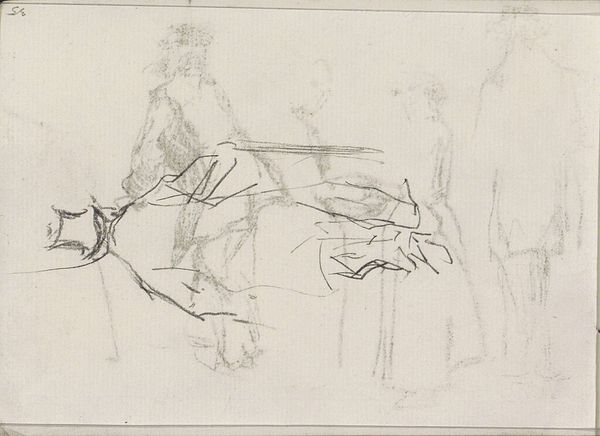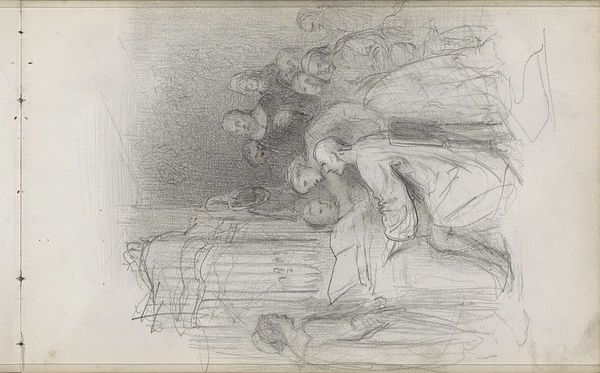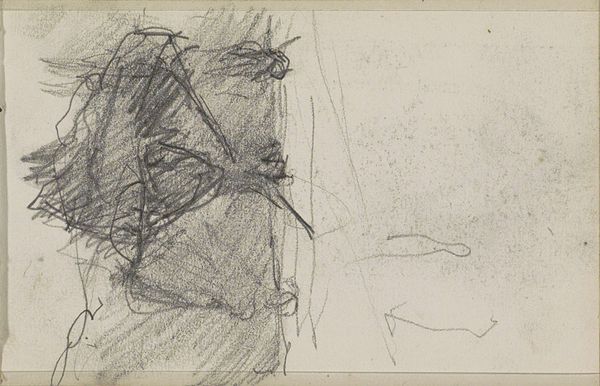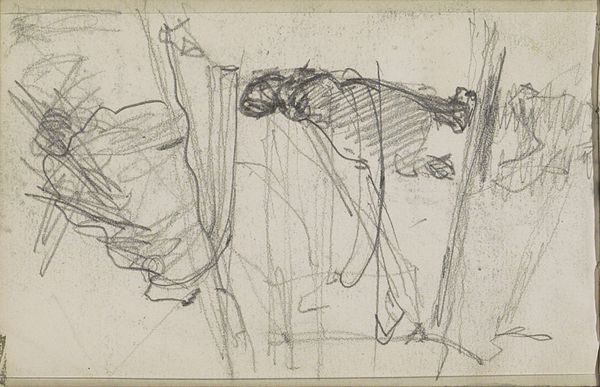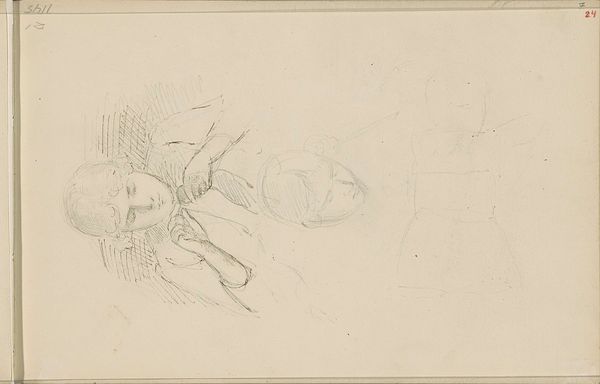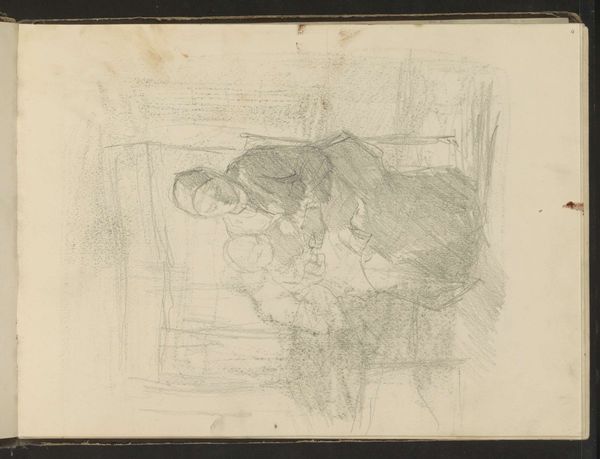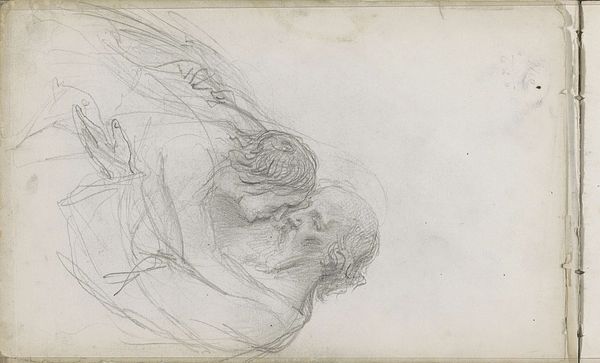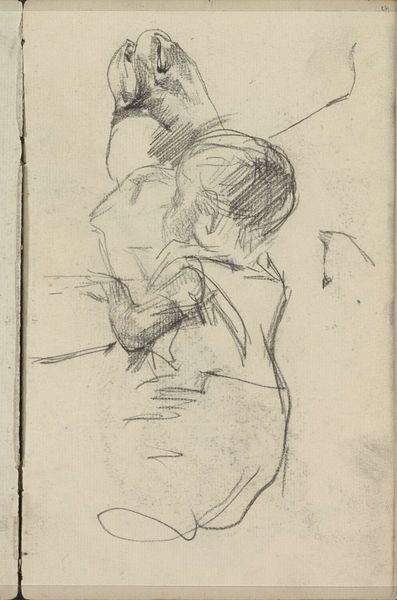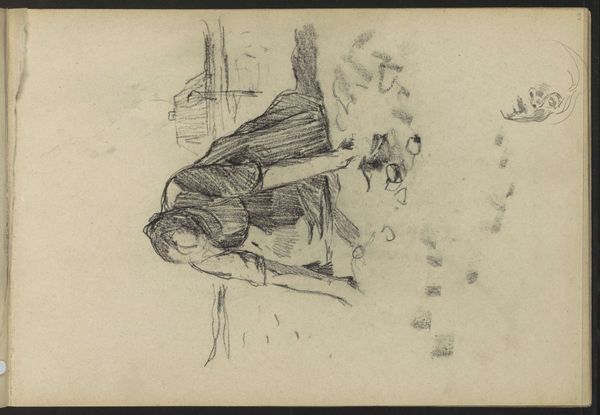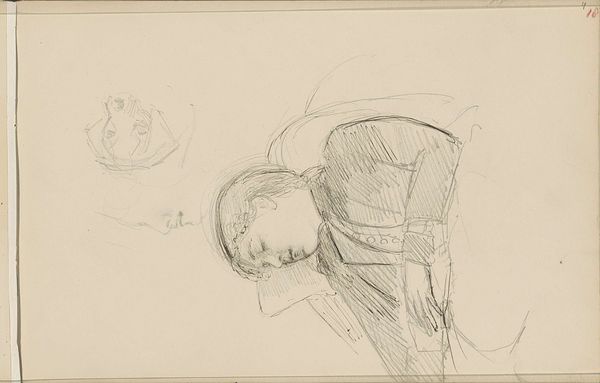
drawing, paper, pencil
#
portrait
#
drawing
#
figuration
#
paper
#
child
#
pencil
#
realism
Copyright: Rijks Museum: Open Domain
Curator: Immediately, the muted tones give me a feeling of hushed secrets, don’t you think? There’s a delicacy about the pencil strokes... It’s dreamlike. Editor: This is an early drawing by Bastiaan de Poorter, created around 1858. The work is aptly titled, "Three Children Looking at a Mirror by a Mantelpiece." It's rendered in pencil on paper and currently held at the Rijksmuseum. What fascinates me most is how the mundane act of children peering into a mirror becomes a site of intense reflection – quite literally! – about identity formation. Curator: Exactly! It makes me think about my own childhood, staring into mirrors, imagining different versions of myself. It’s playful and a bit haunting, all at once. There’s an unfinished quality to the drawing too, as if the children's identities are still being formed. Editor: And let’s consider the implications of the mirror itself. It’s not merely a reflective surface; it’s a mediator between the self and the external world. These children, likely from a privileged background given the interior setting, are actively engaging in constructing their self-image within the confines of societal expectations and their familial legacy. Curator: It’s fascinating how the mirror implies a level of self-awareness at such a young age, almost forced upon them. Is that slight distortion of the reflection on purpose? Maybe de Poorter meant to question that clarity, perhaps reflecting the distortions of social expectation itself. Editor: De Poorter may have meant to subtly critique the bourgeois emphasis on outward appearances and self-presentation. How are children socialized into gendered or class-based identities through these everyday interactions? The act of looking, who gets to look, and who is being looked at—those are always critical questions. Curator: Ah, and I bet those are questions those kids never even considered. Sometimes, seeing a glimpse of reality in such plain terms has a real way of changing how you engage with yourself. Editor: Yes, absolutely! De Poorter’s drawing prompts us to reflect on the complex interplay between childhood innocence, social conditioning, and the formation of identity—and consider those things outside our contemporary experience. Curator: I am curious how children engage with a work like this today, a true step outside of the contemporary. It might reveal unexpected and timeless themes around identity. Editor: Precisely. The image’s value resides in prompting thoughtful interrogation of the seemingly mundane rituals.
Comments
No comments
Be the first to comment and join the conversation on the ultimate creative platform.
